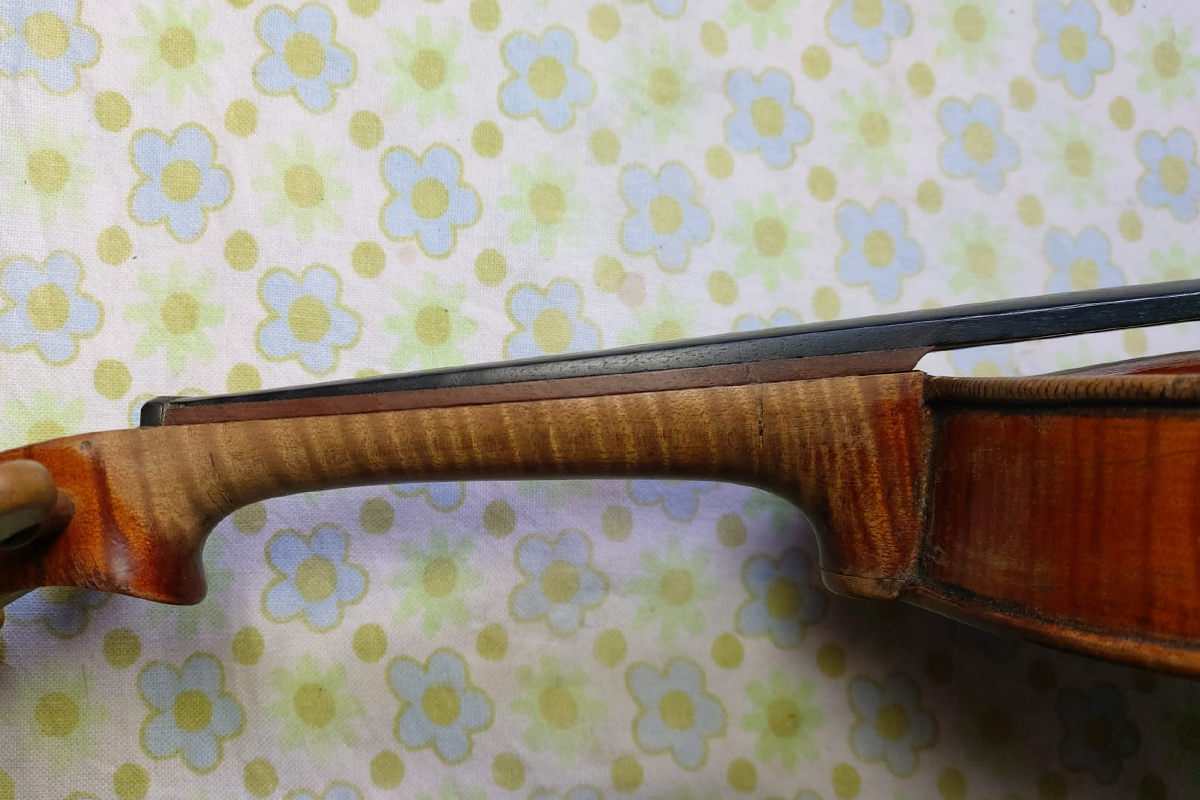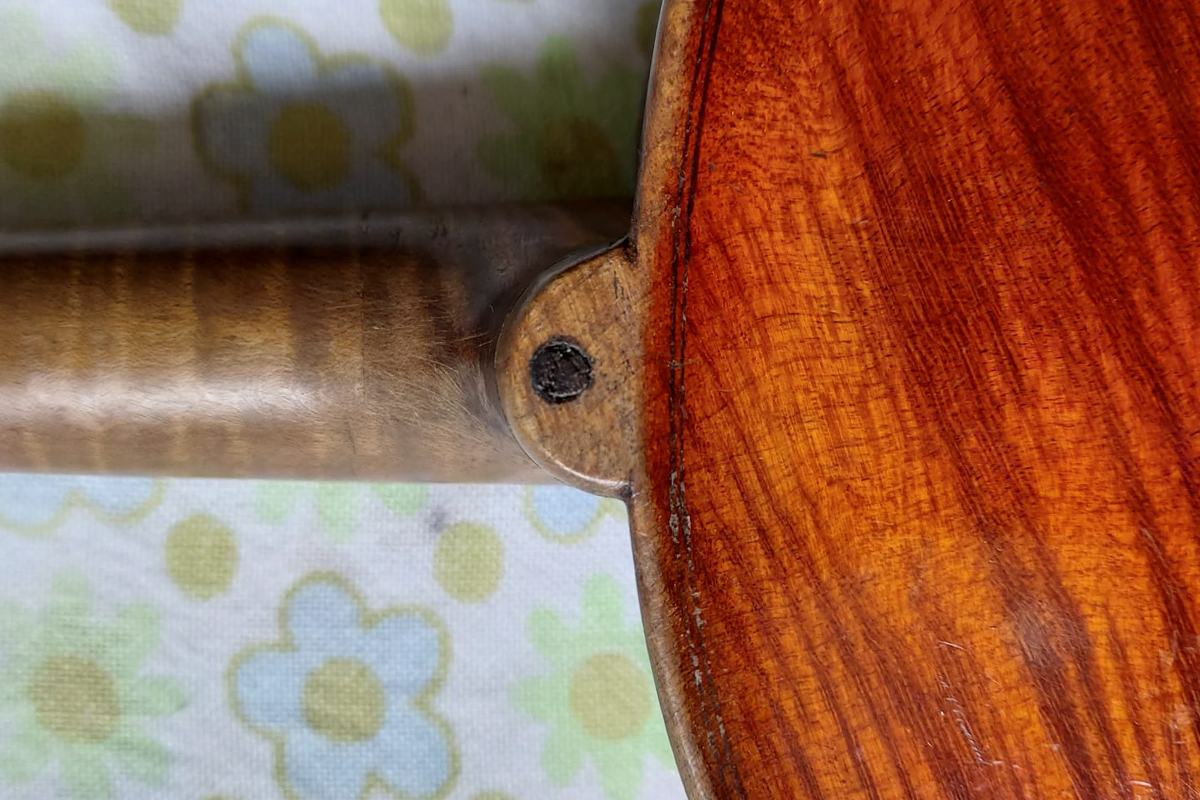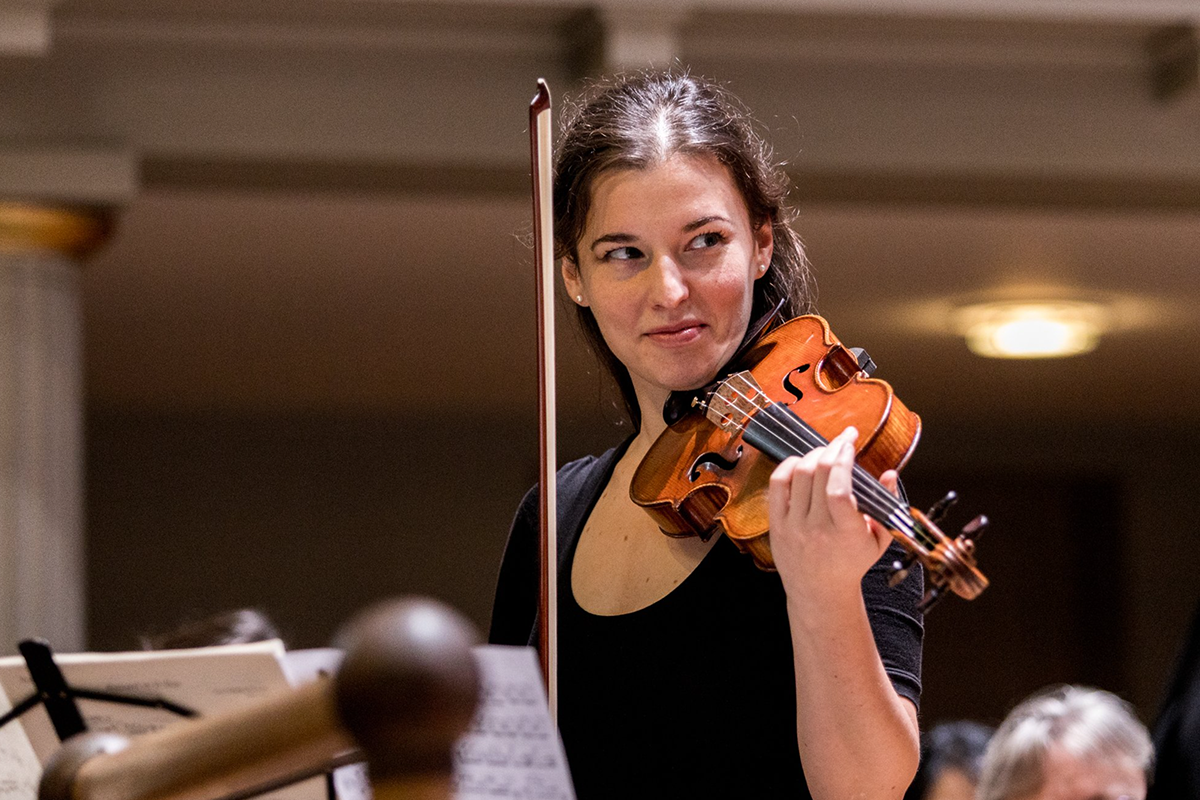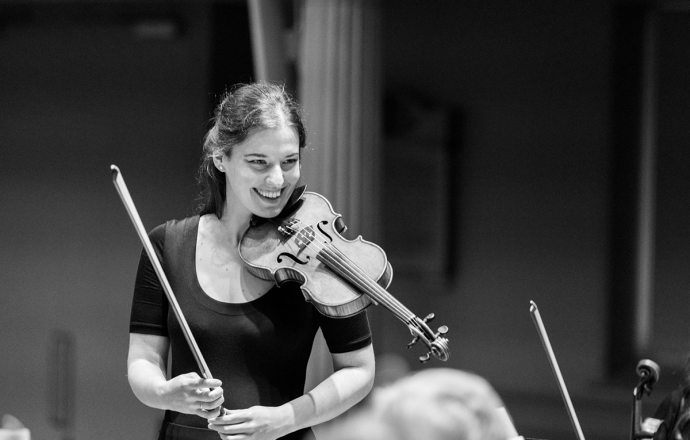When violins were first made in the early 17th century, they were simpler than they are today.
They had necks nailed into place that were not designed to be removed. The nails were handmade and substantial so the neck stock had to be large to accommodate the nail. Some of Stradivari’s violin necks were fitted with 3 or 5 smaller nails. To accommodate the nails the internal top block was also huge compared to now, which of course affects the sound, as it works like a dampener.
They had fingerboards that were made of wood that would wear more easily. Gut strings used at the time certainly meant there was less fingerboard wear anyway.
The necks were heavy, thick, cumbersome and shorter than today’s instrument. A player could not ‘fly’ up and down the fingerboard as easily as now. The instrument neck looked and felt quite different. The neck is perpendicular to the violin body and the fingerboard is used to create the upward angle.

Thomas Cahusac violin 1777. Neck flush at the body as held in place by nails.

English makers sometimes fitted a dowel through the ‘button’ of the violin back for more support.
Guitars and lutes at the time were much more common and were really made as throw away instruments. But as popularity rose for violins, and the sound they produced, the instruments themselves became more elaborate.
More exotic woods were incorporated for fittings and although the body and head still look pretty much the same as they always have, the design for a neck that could be removed and replaced came about.
This made a significant difference to the restorer. Necks could now be removed if damaged and the instrument could be restored and played for hundreds more years. The neck now takes on the angle needed to create pressure for the bridge onto the front.

Modern violin. Neck fitted into the body. Neck angled.
With the neck angle significantly influencing the sound of violins, violas and cellos its so useful to be able to remove necks, restore necks and refit them to get the best out of the instruments.
I recently changed the neck angle on a large cello restoration and on completion the cellist couldn’t believe the quality of the sound the cello now has.
RNS return to The Maltings 19th April

Maria Wloszczowska
Well worth a visit to the Maltings in April to hear Maria Wloszczowska play and direct this quintet.
She is the most extraordinary player. Almost a year ago now I had the privilege of hearing her live at ‘The Sage Gateshead’ where Dinis Sousa, the conductor, announced she had accepted the post of ‘new leader’. I was blown away not only by her ability but her presence on stage.
The link for the Maltings is here.
Looking forward to the concert!


Leave a comment